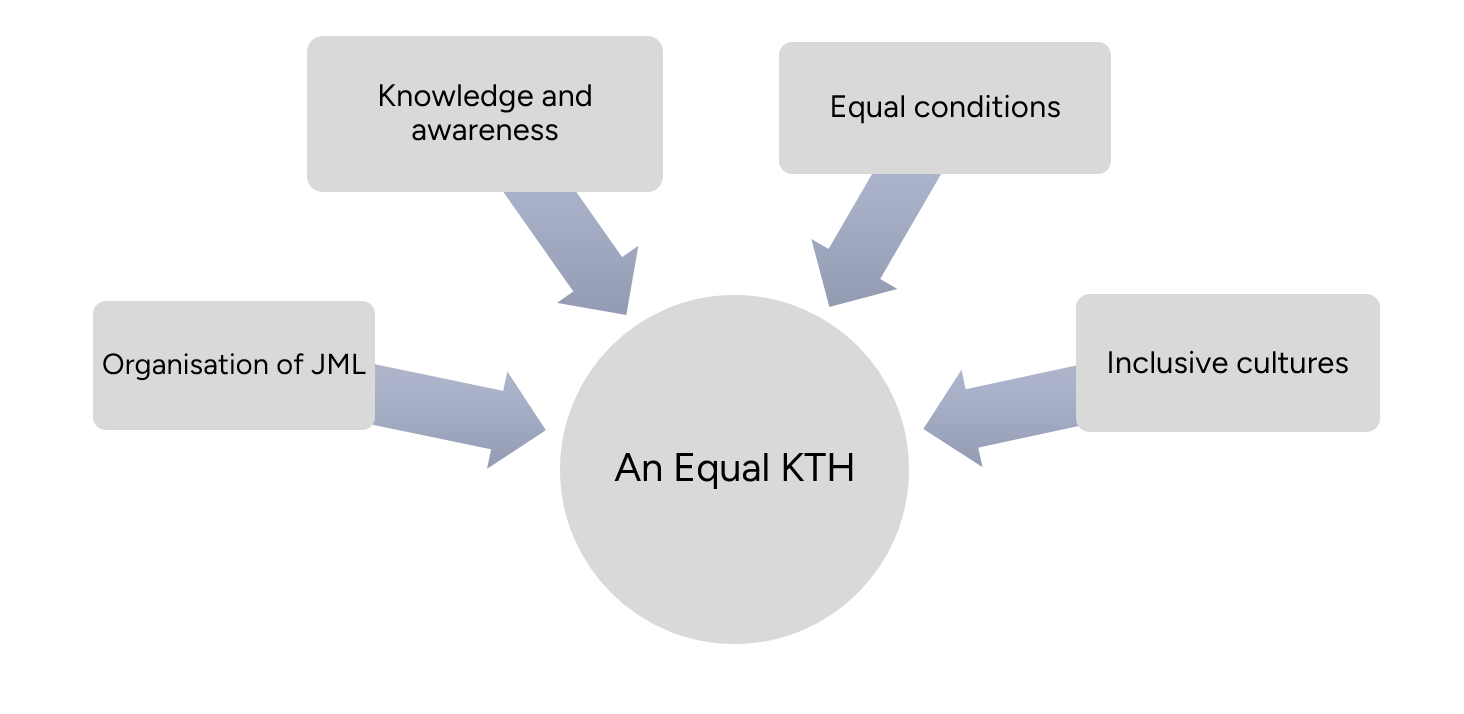Gender equality, diversity, and equal conditions (JML)
At KTH, we conduct proactive and systematic efforts to increase inclusion and equality for employees and students. The work within gender equality, diversity, and equal conditions at KTH is referred to as JML (from the Swedish terms jämställdhet, mångfald and lika villkor). This work is conducted across many different functions within education, research, and administrative support.
JML at KTH encompasses both structure and culture, meaning measurable quantitative data as well as qualitative patterns in work and study environments. The goal is to integrate JML into all regular work processes, making it sustainable in the central operations and a natural part of KTH's quality work. JML work is governed by laws and government guidelines, internal policy documents, as well as research-based situational analyses that collectively guide the direction of change efforts.
What does a more equal KTH mean?
- A more equal distribution between men and women in operations and decision-making bodies.
- Gender-conscious leadership.
- Integrated gender perspectives in education and research.
- Working for gender equality outside of KTH as well.
- Resource allocation with a gender equality perspective and equal opportunities for staff in various parts of KTH.
- JML should permeate the operations in such a way that it influences quality, competence supply, competitiveness, and economy.
The goal of JML work
The JML work at KTH is organized around four different prioritized areas aimed at increasing inclusion and contributing to gender equality at KTH: collective organization, equal conditions, knowledge and awareness, and inclusive cultures.

